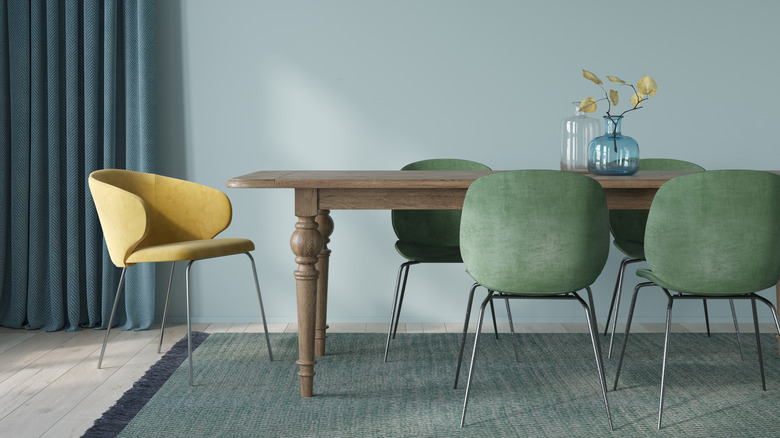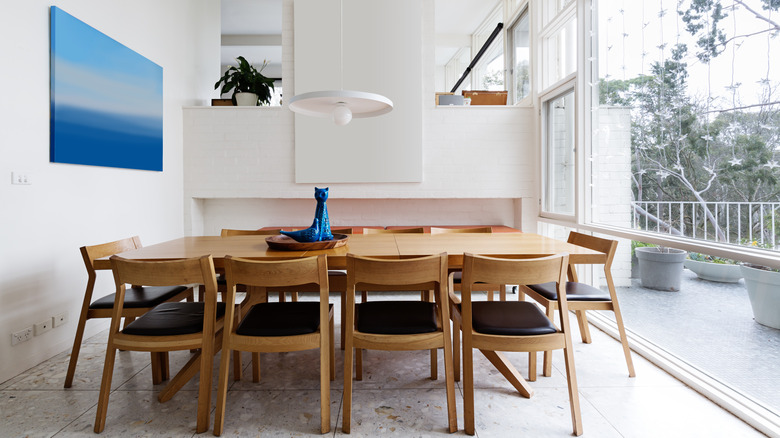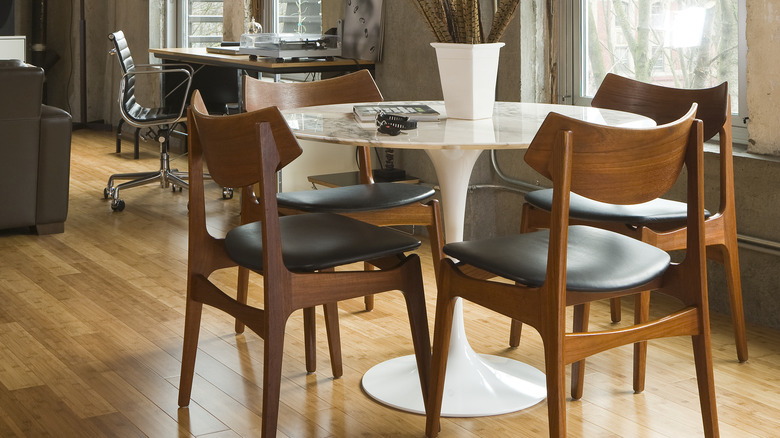Tips For Styling A Vintage Dining Table So That It Fits Into A Modern Space
Maybe you scooped up an Art Deco dining table for a shockingly low price at an antique market or were struck with the idea to jazz up an old farmhouse piece. You might have inherited a stunning mid-century modern table from a family member or simply got bored of the dining surface that was taking up space. Regardless, you now have a vintage dining table on your hands but a modern home, and — somehow — you have to make the two come together.
First, you might be wondering if it's even possible to mix modern and vintage pieces without it looking like an unintentional hodgepodge of styles and eras. And if it's possible, the biggest question lies in how. Fortunately, it's not only doable, but it can look extremely design-savvy when done well. In fact, vintage pieces add character and can infuse just the right amount of nostalgia in modern space. And luckily, there are a few handy styling tips on successfully blending old and new.
Make sure wood and material colors match up
There are many ways of blending these design styles and creating a dining room that warmly embraces older and newer furniture and decor. If you're finessing a vintage dining table into a modern space, one of the most important things is matching up the color of wood (or other material) with other tones in the room.
One failproof way of doing this is ensuring accents and other furniture are the same type and color of wood. That being said, the colors don't always have to match exactly. As Pepper + Vetiver notes, you can mix colors as long as the tone is consistent. Tone is basically a measure of color "temperature," meaning a warm, orange or yellow-leaning wood like oak might look a little jarring next to an ashy, cool-toned walnut furniture item.
Another thing to consider when it comes to wood color is context and the type of modern design you're adhering to in the dining room. Two kinds of wood tables can look very different in the same room. If your modern room is full of metal furniture or ultra-sleek decor, an old farmhouse table might not be the best choice. A dark wood table on the other hand could easily work. If wood tones aren't matching up or the color is off but you want to keep the table, refinishing or painting it can be a handy solution.
Identify your vintage dining table's era and mix in modern seating
Knowing more about the style and history of the table makes it easier to incorporate into your modern dining room. The list of possible style periods is long, but you can start by figuring out if your table falls under the antique, retro, or vintage category. If your table harkens back to the dazzling Art Deco era or shows a slice in time from the mid-century modern decades, this will impact how you style it. For instance, an antique table from the '20s or a Colonial-style pick could fit nicely in a modern farmhouse dining room, whereas a rounded, avant-garde Saarinen table might not look as good.
While the table is important and likely the showstopping piece, don't forget to consider the seating, too. You might be thinking you need chairs in the exact same style, but this is far from necessary. TLC Interiors points out that having a set in the same style, color, and materials can quickly overwhelm a room. While you want the tones and palette to jive, it's a great opportunity to bring in modern chairs that complement your vintage table.
The last idea you may want to consider is adding small decorative objects and items like tablecloths or table runners to really immerse the table in your room. This is also ideal if you're planning on refurbishing the table or are still hunting for items that match.


